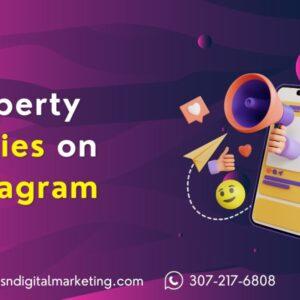On-page SEO is a crucial component of any effective search engine optimization strategy. Properly optimizing individual web pages gives search engines the signals they need to understand your content and rank it higher in results for relevant queries.
In this comprehensive guide, we’ll explore the latest on-page SEO strategies and best practices that you can implement right away to boost your website’s visibility and attract more traffic. Follow along for steps to optimize title tags, meta descriptions, headings, image alt text, site speed, internal linking, and much more.
Optimize Your Title Tags
Your title tags tell users and search engines what your page is about. Keep these SEO title tag tips in mind:
- Include your target keyword (but don’t keyword stuff). This aids in enhancing search engine comprehension of the subject matter.
- Length: Google may display up to 60 characters. Keep titles under that length.
- Unique titles for each page. Steer clear of using the same title for multiple pages.
- Compelling wording. Titles should entice clicks in search results.
- Brand name inclusion can help recognition and clicks.
- Location relevance if appropriate – city names, areas, etc.
Check your title tags using Google Search Console or SEO tools and tweak the ones that need improvement.
Write Compelling Meta Descriptions
Meta descriptions summarize page content in search results. Follow these practices:
- Accurately describe the page’s topic and value. Include keywords.
- 150-160 characters usually display fully. Don’t exceed 160.
- Create unique descriptions for each page – no duplicates!
- Use compelling wording and language to generate clicks.
- Add call-to-action language if relevant like “Download now” or “See options”.
- Check descriptions periodically and test new versions to optimize click-through rates.
Use Strategic Header Tags
Header tags (H1, H2, H3) organize content into logical sections. Use them strategically:
- One H1 tag per page – this is the page’s main heading. If it aligns naturally, incorporate your target keyword into your content.
- Break up content with H2 and H3 tags for subsections.
- Don’t “keyword stuff” – headers should flow well for readers too.
- Tags should descend logically – don’t skip from H2 to H4, for example.
- Avoid repetitive headers like using “Overview” on every page.
Getting header tags right helps search engines better grasp your content structure.
Optimize Your Image File Names & Alt Text
Images shouldn’t be an afterthought in SEO. Optimizing them includes:
- Rename files to include keywords – not just random strings or numbers.
- Write descriptive alt text summarizing the image using keywords where logical.
- Don’t overstuff alt text with keywords. Stay under 125 characters.
- Use keywords users would search to find the image.
- Remember to consider visually impaired users when adding alt text to images.
Proper image SEO makes your images rank better in image search and supports overall on-page optimization.
Improve Site Speed for Higher Rankings
Site speed significantly impacts search rankings, user experience, and conversion rates. Here are ways to improve speed:
- Use a fast web hosting provider with solid performance uptime.
- Enable caching in WordPress – this stores pages to load faster.
- Optimize the size of HTML, CSS, and JavaScript files by minifying them.
- Compress images properly – use tools to reduce file size.
- Eliminate unnecessary redirects.
- Reduce the number of HTTP requests by merging files and implementing CSS sprites.
- Defer nonessential JavaScript if possible.
There are many free and paid tools to measure site speed and identify issues for correction. Faster sites lead to better user experiences and higher conversions.
Optimize Internal Linking Structure
Internal links pass authority and signals throughout your site. Here’s how to optimize them:
- Link to authoritative, useful content rather than low-value pages.
- Include keywords in anchor text judiciously – vary text rather than repeating the same phrase.
- Cross-link related content to establish connections.
- Make sure links use relative paths, not absolute URLs.
- Break up “walls of text” with relevant linked keywords.
- Eliminate excessive linking – every word doesn’t need a link!
Take time to review your internal linking to ensure it facilitates discovery and adherence to Google’s E-A-T principles.
Enhance Pages with Schema Markup
Schema markup uses code to describe your content’s purpose. Benefits include:
- Google displays rich snippets in some SERPs based on Schema.
- Provides more context to search engines on content.
- Can enhance sitelinks search appearance.
Common Schema types are FAQs, products, and articles. Use Google’s Structured Data Testing Tool to identify where Schema could augment pages. Just avoid excessive usage. Schema should feel organic.
Create Keyword-Focused Content
Optimizing existing content for keywords is only part of the equation – you need to also write new content centered around keyword opportunities.
Conduct keyword research using tools like Google Keyword Planner, review search analytics, and brainstorm clusters of related keywords tailored to each new post. Embed these keywords naturally throughout the content.
Remember to focus on long-form, in-depth content. Thin content tends not to perform as well for SEO or conversions.
Monitor & Refine for Continuous Improvement
Don’t take a “set it and forget it” approach to on-page SEO. You need to monitor and refine on-site optimization continually.
Regularly check page titles, descriptions, header tags, alt text, internal links, site speed, and other elements using SEO tools—update and test variations.
Analyze Google Search Console reports for crawl errors, filter by page to identify issues and request indexing of new pages.
Stay atop Google algorithm updates that may change SEO best practices. Continually optimize existing content while also producing new content that aligns with search intent.
On-going refinement ensures maximum search visibility and reduces the gradual decay of page authority over time.
Hopefully, this guide provided you with a thorough overview of implementing today’s essential on-page optimization techniques for higher rankings. For more personalized assistance in applying these on-page SEO strategies, explore our website at ASN Digital Marketing, your trusted partner for digital success.









